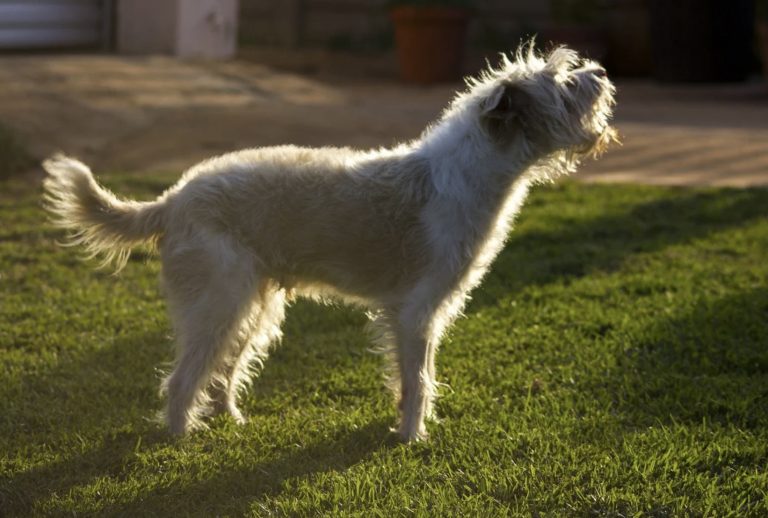Many dog owners face this problem and challenge. What to do with a barking dog? Why is your dog barking? What to do? How to teach your dog not to bark?
Well, the first thing you need to do is understand the different types of bark. Every bark has a purpose. No dog barks just for the sake of barking.
It is essential that you understand why your dog barks and try to solve the issue. Otherwise, you might face problems with your neighbors. Residents might file formal complaint about your noisy dog. And you do not want an anonymous complaint from your neighbor.
Five Types of Dog Barks
Any dog trainer will tell you these. Your dog can bark for different reasons. The secret to proper dog training is understanding the right behavior and barking and trying to solve the unnecessary excessive barking. As a responsible dog owner, you have to understand the difference between different barking.
- Alert barking – This is a type of barking your dog uses to alert people around to what is happening
- Demand barking – Your puppy will do this often, barking to get something they want or barking for attention. Usually, attention barking is when you ignore the dog and they want to do something
- Fearful or aggressive barking – Dogs also bark when they want to chase things away from them. It is their way of saying “Get away from me”
- Playful barking – When dogs play with each other, they often play. But it is crucial that you understand the difference between playful barking and aggressive barking
- Anxious barking – Dogs can sometimes bark because they are stressed or anxious
Understanding your dog’s body language
Now that we know the five types of a noisy dog, let’s talk about how to identify them. And the only way to do that is by looking at body language and what sets your dog’s barking. Pay attention to the sound of the bark and the body language.
With that in mind, alert barking problem is easily identified by watching for the trigger and resolution. For example, your dog hears someone ringing at the doorbell, and they bark to alert you someone is coming. Or someone is passing by your door. Usually, the dogs barking stops once the trigger passes
Demand barking is easily identified when your dog barks for attention. Similar to alert barking, it stops the moment you give your dog what he wants. If that is say, a toy, the barking stops when you throw the toy. Or if that is dinner, your dog stops barking when you put the dinner bowl in front of him.
Fearful and aggressive excessive barking issues often overlap. It is a type of barking at a lower pitch and comes with a stiff body and a direct stare. When your dog barks and then backs away or lunges toward the trigger, it is aggressive barking. Check if your dog is leaning his body forward, holding his tails and ears high, and staring intently.
The best way to identify playful bark is to listen for a higher pitch and look for wriggly and loose body language. This happens when barking dogs play with each other or when a beloved human comes to the house and stops when the human interacts with the dog.
Dogs that are anxious or stressed bark in short bursts at a relatively high pitch. They may also howl. Usually, anxious barking happens in dogs with separation anxiety.
Techniques to Reduce Barking
I have talked in separate articles about how to stop a puppy and dog from barking. But it is always good to repeat some techniques you can use to stop a barking dog.
First and foremost, remember not to yell at your dog to be quiet. Keep training sessions positive and upbeat.
Technique No.1 – Remove the motivation
There is another technique I like to use while on walks, called stimulus blocking. This is another technique, removing the motivation or stimulus.
What sets you off your dog to bark? Remove the motivation, and when your dog stops barking, give him a treat or praise your puppy.
For example, if your dog barks at people passing by the living room window, manage it by closing the curtains or putting your dog in another room.
Technique No.2 – Ignore the barking
You should never give in to your dog’s barking. Ignoring might get him to stop barking for a moment. And the moment he stops barking, mark the behavior and reward and praise. When you ignore a dog, do not talk, touch, or look at your puppy. Every attention will constitute as a reward and reinforce his barking.
Technique No. 3 – Desentization
This technique works great when you want to stop your dog from barking at certain things. Start with the stimulus or what makes them bark at a distance. Gradually reduce the distance.
When you get close to the stimulus, your dog will bark. But pass by the stimulus two, three, four times more, and your dog will not bark at it.
Now, if your dog barks, say, at people on bikes. Have a friend with a bike and arrange for him to pass by. As he is coming close to you, offer your dog treats or dog food. This works even better if you hand feed. Stop feeding treats when your friend disappears from the view.
Technique No. 4 – Ask your dog to do something else
The biggest secret in dog training is learning how to teach your dog to do something you want. The question is not how to stop a puppy from barking. The question is what do you want him to do instead?
Here is how you do it. Say your puppy barks when someone rings the doorbell. Ask yourself, what do you want him to do instead? What do you want your pet to do? Then, have someone ring the bell, and you give your pup a command to do. For example, sit.
Training your dog to be quiet
Let’s finish off this article about a barking dog with teaching your dog to be quiet. Or, teaching him the Shush command. It is the best way to solve your barking dog problem.
How do you do it? Well, first, you have to teach your dog to bark on cue. Once your dog barks on cue, then you can teach him the shush command.
While your dog is barking, place a treat close to his nose. And give a verbal command for shush. Why does this work? Because your dog cannot bark and sniff the treat at the same time. While sniffing, he will stop barking.
Then, reward his quiet behavior. Reinforce it all the time, and with time, you can teach your dog to be quiet in a matter of seconds.







